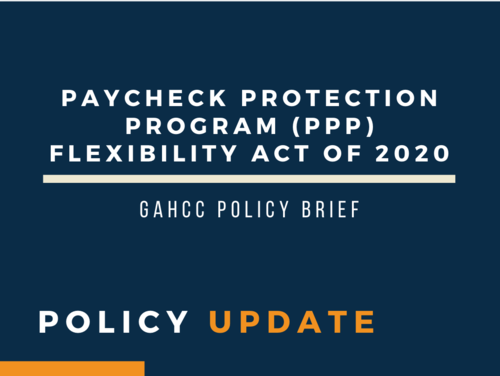AUSTIN, TEXAS – Today, President Donald Trump signed H.R. 7010, the Paycheck Protection Program Flexibility Act of 2020 into law. Under H.R 7010, several changes will be made to the forgiveness provisions of the Paycheck Protection Program including changes to the coverage period and the 75/25 rule. Below is a list and explanation of changes being made under H.R. 7010.
Loan Maturity Changes
Under H.R. 7010, PPP loans taken out after enactment of H.R. 7010 that are not forgiven will have a maturity date of 5 years. This is a change to the original 2-year maturity date when PPP was first introduced. While the 5-year maturity date applies to PPP loans taken out after the enactment of H.R. 7010, the act allows lenders and borrowers to mutually agree upon modifying the maturity date of a PPP loan already taken out, to conform with the 5-year period.
Coverage Period Changes
One of the most notable changes made to PPP in H.R. 7010 will be the extension of the coverage period for forgiveness. Under the original guidelines to PPP, businesses had 8 weeks to incur eligible expenses to qualify for PPP loan forgiveness. Under these new changes, that coverage period will be the earliest of 24 weeks after loan origination or December 31, 2020. Borrowers may still elect to maintain the 8-week coverage period and maintain payroll until June 30, 2020 as stated in the original PPP.
Changes to the 75/25 rule
Another notable change made in H.R. 7010 is replacing the 75/25 rule with the 60/40 rule. Under these changes, in order to qualify for loan forgiveness, borrowers must use at least 60% of the loan for payroll costs and may use up to 40% of the loan for payment of interest of any covered mortgage, rent, or utility obligations.
Employee Rehiring and Forgiveness Changes
In H.R. 7010, a borrower will still be eligible for loan forgiveness if, in good faith, they are able to document an inability to rehire individuals who were employees on or before February 15th, 2020 and are unable to hire similarly qualified employees on or before December 31st, 2020. Additionally, a borrower is eligible for loan forgiveness, if they are able to document, in good faith, an inability to return to the same level of business activity they were operating at or before February 15th, 2020 due to compliance with safety requirements related to COVID-19.
Deferral Period Changes
H.R. 7010 extends the payment deferral period to 10 months, as opposed to 6 months in the original PPP.
Employer Payroll Taxes Changes
H.R. 7010 now permits PPP borrowers to delay their payment of 2020 employer payroll taxes to December 31st, 2021 (50%) and December 31st, 2022 (50%). Previously, borrowers were unable to defer employer payroll taxes if their PPP loan was forgiven.
Sources:
H.R. 7010 congress.gov
PPP Flexibility Act of 2020 passes Congress. National Law Review
Congress agrees on favorable changes to Paycheck Protection loans: What does it mean for borrowers? Forbes.com

